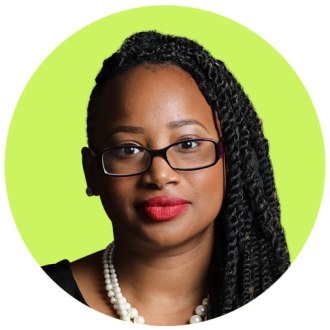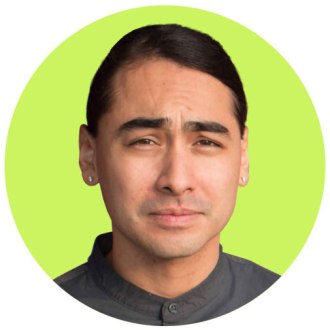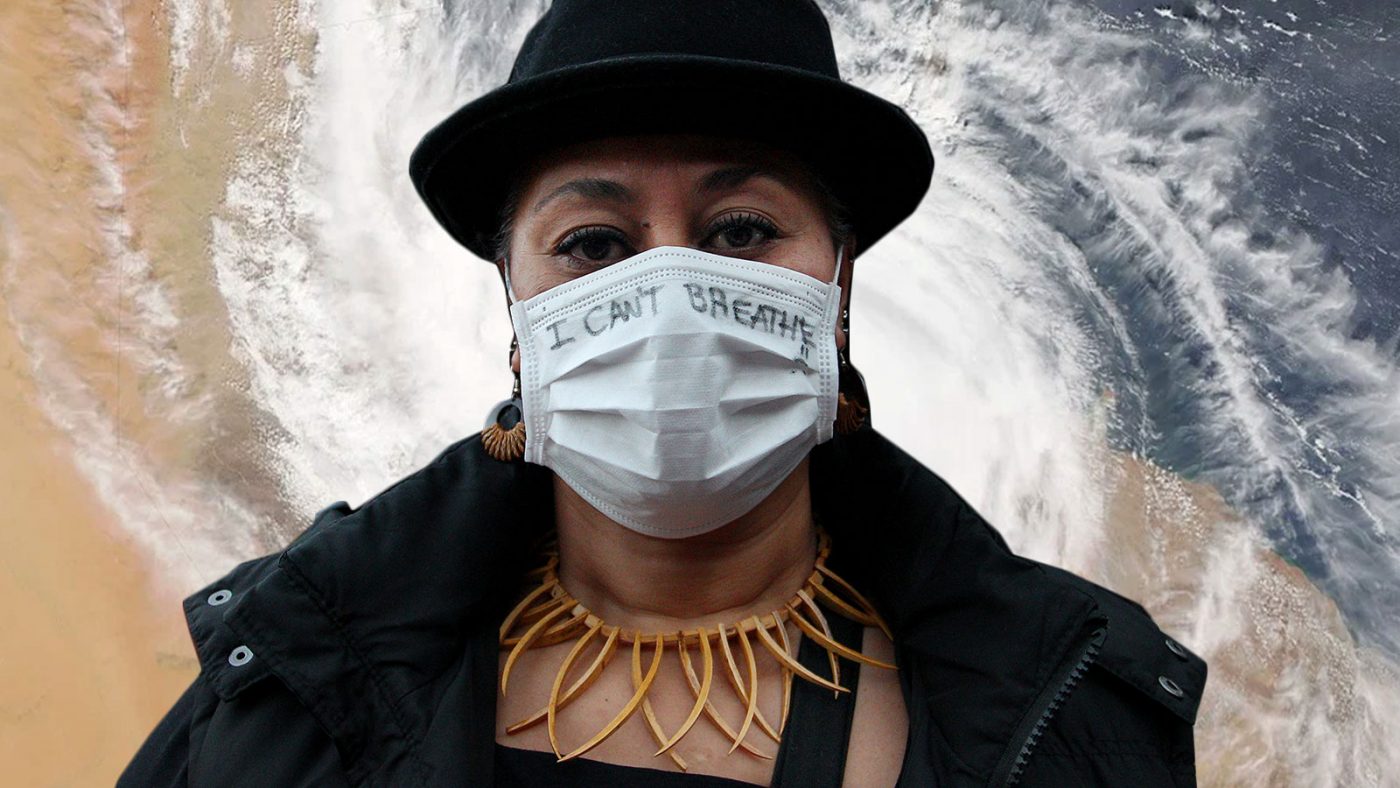We now know that coronavirus — much like police brutality, mass incarceration, and climate change — is not colorblind. It’s not that the virus itself differentiates by race, but, as with other crises, the factors that make communities of color more susceptible to it are shaped by the United States’ long history of discriminatory policies and practices.
Many of the places that have been dealt the harshest blow by COVID-19 are simultaneously dealing with other serious threats to residents’ well-being. Even under the cover of the pandemic, environmental rollbacks and pipeline plans continue to threaten the health of people of color. Add to that the outrage and civil unrest that has erupted in many cities in reaction to the death of George Floyd — a black man on whose neck a white police officer knelt for more than 8 minutes — and you have a veritable witch’s brew of community risk.
So what does it mean to have all these calamities come to a head at the same moment? Will policymakers see the compounded threats as a wakeup call to the many ways our society is structured unjustly and unsustainably? What are people doing now to try to build a more resilient, equitable world? How much, and in what way, will things change as cities and states begin to emerge from quarantine?
Even as some folks mumble about getting “back to normal,” others are talking about ways to make sure “normal” is never the same again. To that end, we reached out to five environmental justice leaders and Grist Fixers from the West Coast to the East, to get their takes on addressing the compounded threats of racial injustice, climate change, and COVID-19. Here’s what they had to say.
The following responses have been edited for length and clarity.
Impacted communities need to be front and center in a recovery

Adrien Salazar: Senior campaign strategist for climate equity at Dēmos, New York
Climate justice means racial justice. Today we are in the midst of a political and social upheaval that has exposed the deep structural inequalities of our society in ways that are unignorable. Communities of color are the most threatened by pollution and by COVID-19. And current events have brought into stark relief the lived reality of black people in particular, whose lives are endangered by police and white-supremacist violence. We must undo the institutions that perpetuate anti-black racism and white supremacy. This is a precondition to achieving true environmental justice.
Black communities are simultaneously confronted by the acute violence of police brutality and the chronic, slow violence of unequal environmental health impacts. Some people have called COVID-19 a “great equalizer,” because the disease is affecting so many. But we now know it is not a great equalizer. Black and brown people are most at risk. Any pandemic or other catastrophe that takes place in an unequal society will have unequal impacts.
Working on climate policy advocacy, I have been navigating the COVID-19 crisis by supporting the immediate needs of the most vulnerable communities. The recent stimulus packages — the CARES Act and the HEROES Act — are imperfect pieces of legislation, largely because they have given a lifeline to corporations (on the order of trillions of dollars) while the basic needs of families and workers struggling to survive continue to be negotiated. People have been fighting for the inclusion of key measures, like rent cancellation and a national utilities shut-off moratorium, in these packages. These are things that people need, a reprieve from their bills when they have lost work in order to feed their families.
Right now, the crises we face are intensifying. People are fed up, and compelled to put their lives on the line and take to the streets to demand justice. We have to transform our political and economic systems to end the inequalities aggravated by these overlapping crises. That means policies that end violence in black and brown communities and a long-term economic recovery that invests in those communities. We have to end making some communities sacrifice zones, and we can do that by building a clean economy, strengthening resilience of local communities, and ensuring the right to a good life for all.
Health needs to be recognized as a multi-pronged issue

Kerene Tayloe: Director of federal legislative affairs at WE ACT for Environmental Justice, Washington, D.C.
Healthcare isn’t just access to doctors and medicine. It’s about: Is your home healthy? Is your community healthy? How is that impacting you? It’s pretty clear that the legacy pollutants that have existed in black and brown and indigenous communities for decades have made people who look like me especially vulnerable to COVID-19. And some of the proposed solutions aren’t taking into account the full scope of those inequities. You’re asking people to stay home more, for example, but if their apartments aren’t kept up — many folks who are in rentals or public housing have homes that aren’t up to code, whether it’s indoor allergens like mold or a whole host of other things — you’re putting those people in harm’s way.
Another concern is medical waste. With so many hospitalizations, there’s been a rise in the need for PPE and swabs and medical equipment. Well, a lot of waste gets incinerated in communities of color. So then there’s potential for increased air pollution that’ll come out of that issue. And medical waste isn’t something that is typically managed at the federal level; it’s managed state by state. There aren’t very strong, clear guidelines on how each state is going to handle the situation. In all likelihood, the resulting pollution will get put back into the very same communities that are dying at high rates from COVID-19. It’s this very cyclical process of harm.
And it’s not just about the lack of access to healthcare or the cumulative exposure to pollution. We are living in a society where people of color are disproportionately incarcerated and killed by the police. In this moment, we have to consider the totality of the inequities that communities of color experience. We need to address all forms of injustice to safeguard our health and well-being.
Because COVID-19 is something that everyone in the country is paying attention to, we can use it to draw attention to all of these longstanding problems and drive toward the solutions we’ve identified. This is an opportunity to share solutions in areas like climate change that, under other circumstances, leaders probably wouldn’t have given the time of day.
It’s imperative we fill the gaps in the social safety net

Julian Brave NoiseCat: Writer and VP of policy and strategy at Data for Progress, Washington, D.C.
Just to start, I want to say that black people, as well as their friends and family across the country, are hurting because the police have become an existential threat to their community. This is not just a social- and racial-justice issue, it is also a public-health issue. Black lives matter, and if we truly believe that, we must stand with the people in the street demanding justice and the families mourning the loss of their loved ones. We live in a country built on stolen land and stolen labor. You cannot understand the United States without confronting that ongoing reality.
In Indian Country, what we have been seeing with the coronavirus is that there is an immense gap in the social safety net in places like the Navajo Nation. I’ve been reporting this story about the impact of the coronavirus there. The Navajo Nation holds a treaty with the federal government, which is supposed to guarantee them healthcare. But the Indian Health Service (IHS) facilities there are significantly underfunded — IHS spends about $4,000 per person, whereas Medicare spends more than $13,000 per patient.
On top of that, there are very few supermarkets or other places where you might be able to buy hand sanitizer and toilet paper within a reasonable driving distance. And many homes — some of the most overcrowded in the country, by the way — do not have electricity or running water. Imagine being in a pandemic, and the healthcare system where you would go to seek treatment is woefully underfunded and understaffed, and you might live in a home where you can’t do something so simple as wash your hands. These are circumstances where the coronavirus has been able to just spread like wildfire.
The whole picture represents the failures of the U.S. government to live up to its legal responsibility to tribes, to provide adequate, modern levels of social rights, healthcare, and welfare for all people. Communities like the Navajo Nation have been filling that gap by taking care of each other. There is a big mutual-aid effort underway right now at the Navajo Nation in which people are delivering food and supplies and medicine, and basically doing all of the things that the federal government has failed to do.
Still, in the surveys we’ve been running at Data for Progress, we’ve seen a significant jump in support for a more robust social-welfare system. For example, support for the Green New Deal and for green jobs jumped 10 points during the pandemic. Historically, it has not been unusual for moments of positive change and prosperity to follow crises like this.
Tribal nations should assert their sovereignty to survive

Mariah Gladstone: Founder of IndigiKitchen, on the Blackfeet Indian Reservation in Montana
Native communities, in many ways, have stressors that have been exacerbated by the pandemic. But I also think that there are native communities, especially here in Montana, that I’ve seen react more proactively than many non-indigenous communities.
Blackfeet Nation, where I live, has had stay-at-home orders, curfews, and requirements that people wear masks and gloves when entering any store since March. And we’re still doing that, even though the state of Montana has started to “reopen.” The community is also working on testing all of the residents, which is something that’s not happening within a lot of places — but that’s the type of action that we need. To date, as far as I know, we’ve only had one confirmed case on the entire reservation.
That said, we’re also a community that relies very heavily on tourist income. We’re getting to that point of the year where tourists usually start rushing to Glacier National Park. There’s a concern that when the park opens, we will start getting thousands of out-of-state visitors rushing through the reservation, potentially bringing more cases of COVID-19. But there’s a simultaneous concern that if the park does not open, all of the businesses that get their annual income from these three months of tourist season won’t have that income.
Long term, for this as well as other potential disruptions we may face, it comes down to adaptability. For tribal nations, I think it is essential that we recognize our own sovereignty and our own ability to assert that sovereignty. For example, the Cheyenne River Sioux Reservation has set up roadblocks that are being challenged by the state of South Dakota, but tribal members have been asserting their sovereignty and citing treaty law to say they have the right to control entrance. I think having that local recognition of what’s needed, and the willingness to take actions that are not popular but are necessary, will ultimately help communities thrive and survive.
To build a better tomorrow, we need to deal with root causes

Alvaro S. Sanchez: Environmental equity director at The Greenlining Institute, Oakland
Racism is the sickness this country has never bothered to cure. The injustice, civil unrest, and oppressive use of force we witnessed last weekend clearly shows us that we have a deep need for racial justice. Whether it is a global pandemic, climate change, or policy brutality, people of color — particularly black communities — are always the first and worst hit, and it must end.
COVID-19 really pulled the curtain back to reveal just how quickly people went from kind of getting by, living paycheck to paycheck, to their lives just free falling.
It’s no coincidence that the people who are most impacted by this crisis don’t look like the protesters who are saying we should open up businesses. Some people are saying, “We can get on with our lives and it’s OK, it’s not a big deal,” whereas other people are literally dying because of the crisis.
I think it’s a tough road ahead. But there are things we can do. Number one, we have to center black and brown voices in our struggle for a better world. Our response to this crisis must meet the urgent needs of those who are hit hardest by the pandemic and looming recession: frontline workers, immigrants, the unhoused, and black and brown people. It must be guided by an inclusive vision that deals with the root causes that got us into this crisis, and centers climate, economic, and racial justice.
Number two, it’s clear that preparation really works — and I equate that to climate change as well. The comparison between New York and San Francisco, I think, is getting a lot of attention, with their respective responses to COVID-19. One of the key differences there was local elected officials listening to their health officials, and making concrete decisions around that information, backed by data. Hopefully that’s a message that comes out of this: We have to listen to the experts, and government has to reinforce and amplify that message. That’s the difference between life and death.



